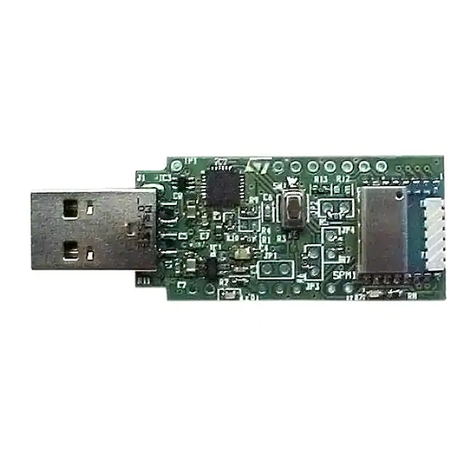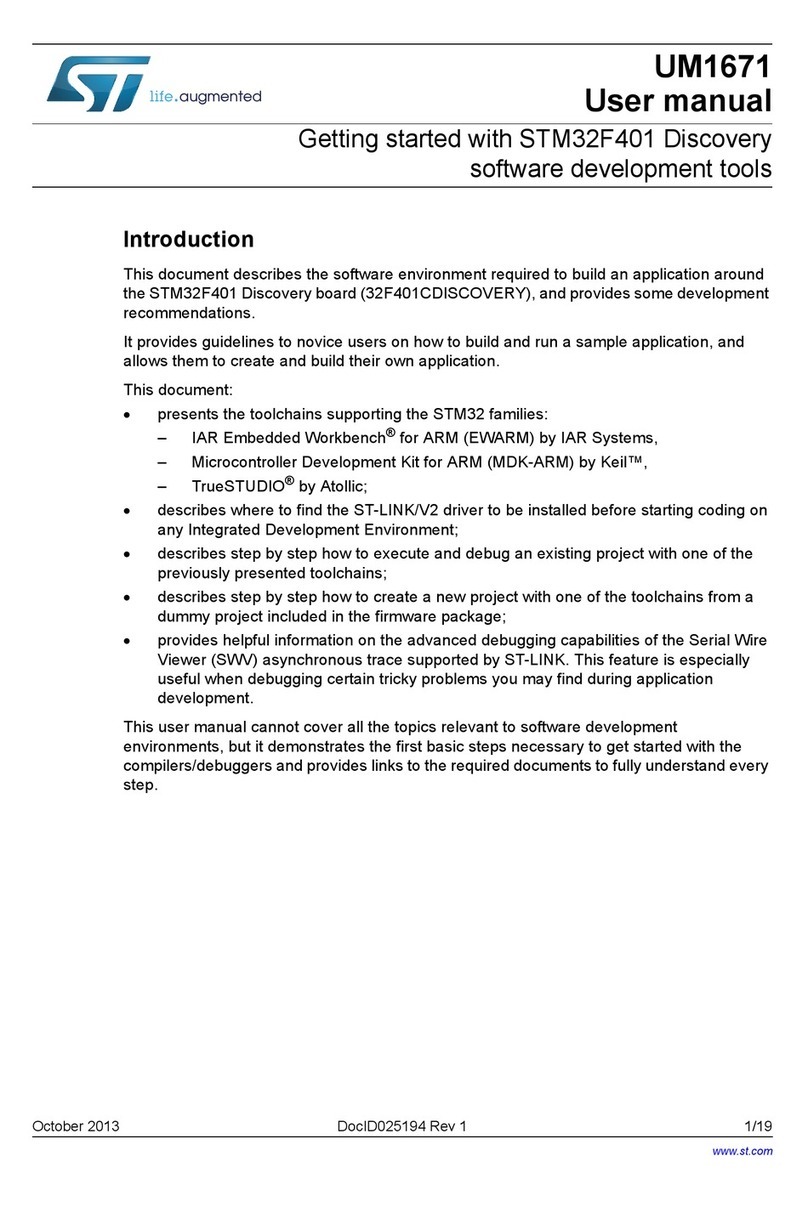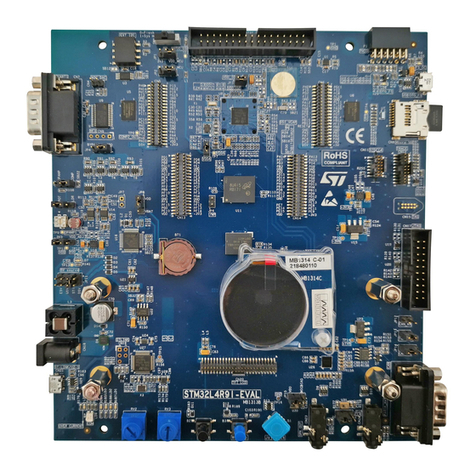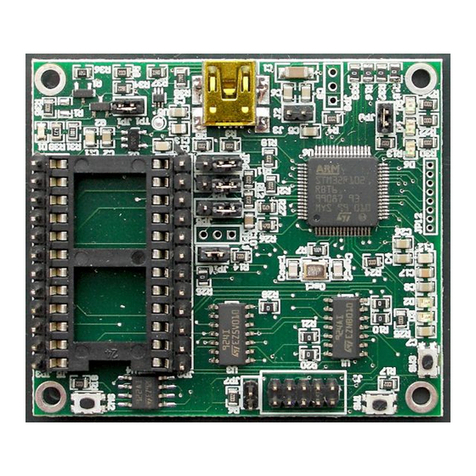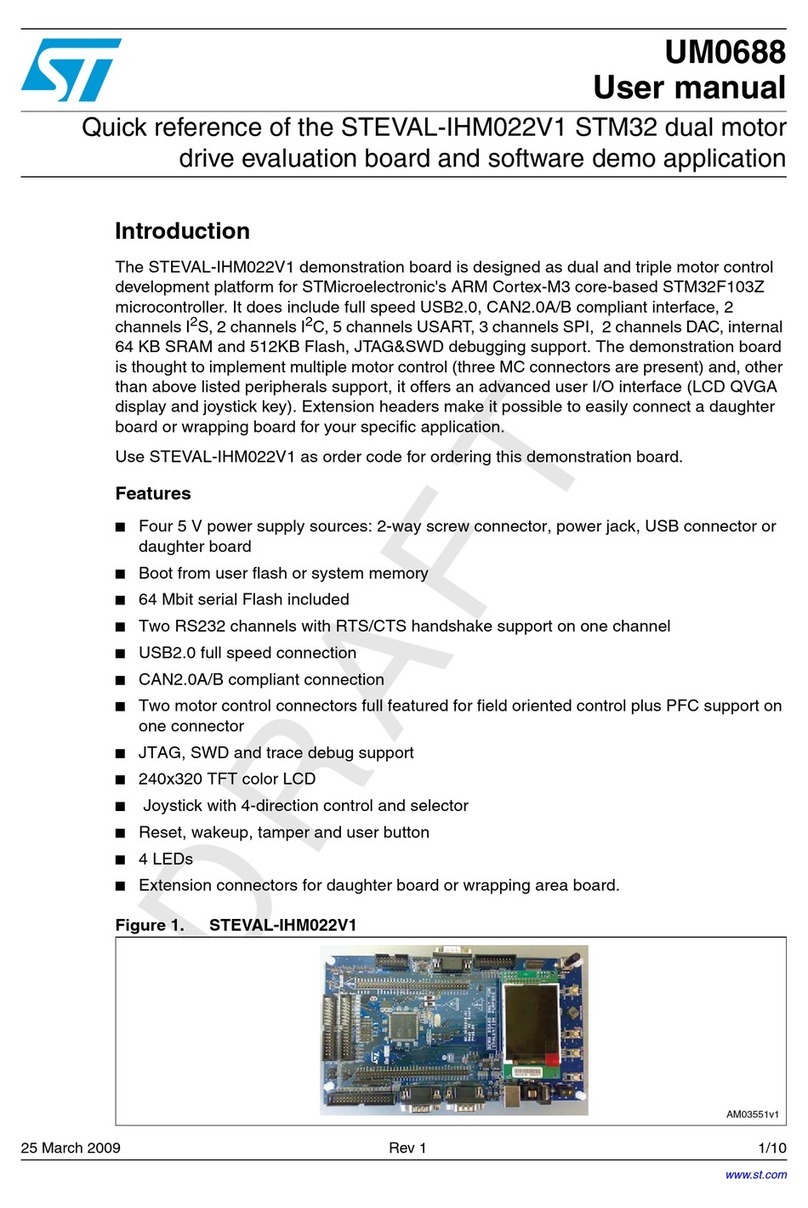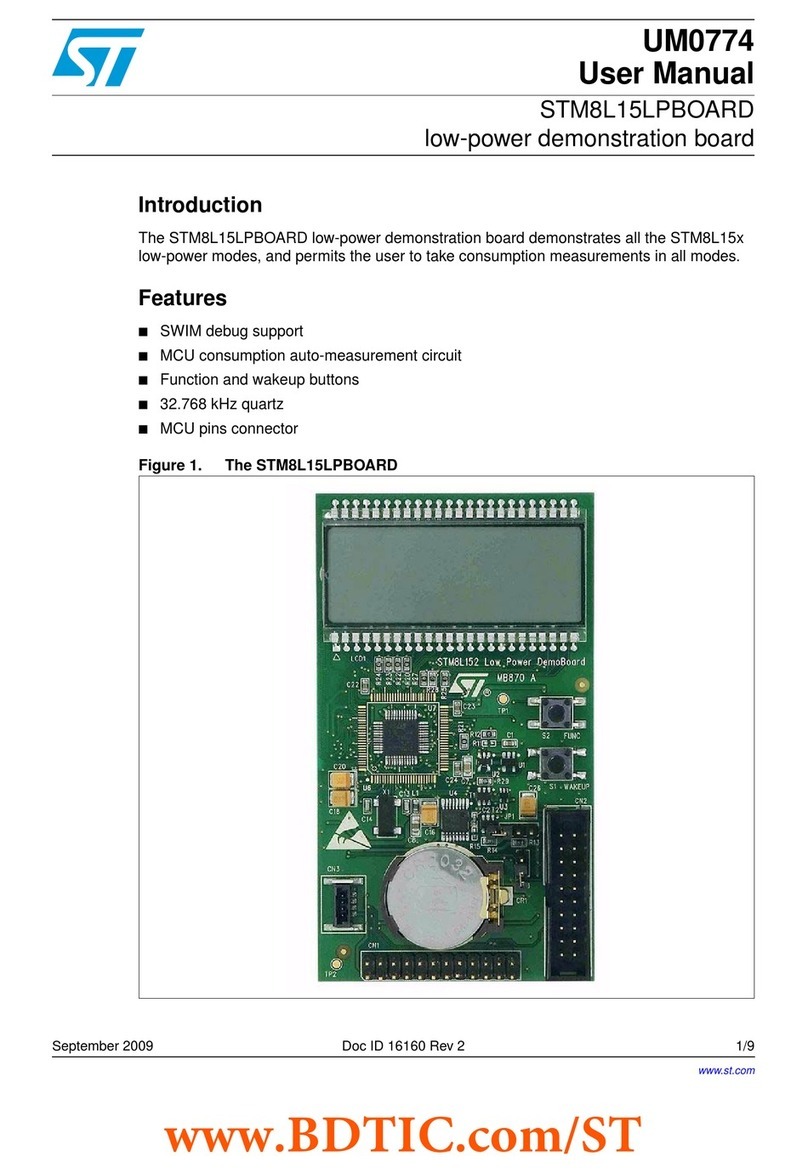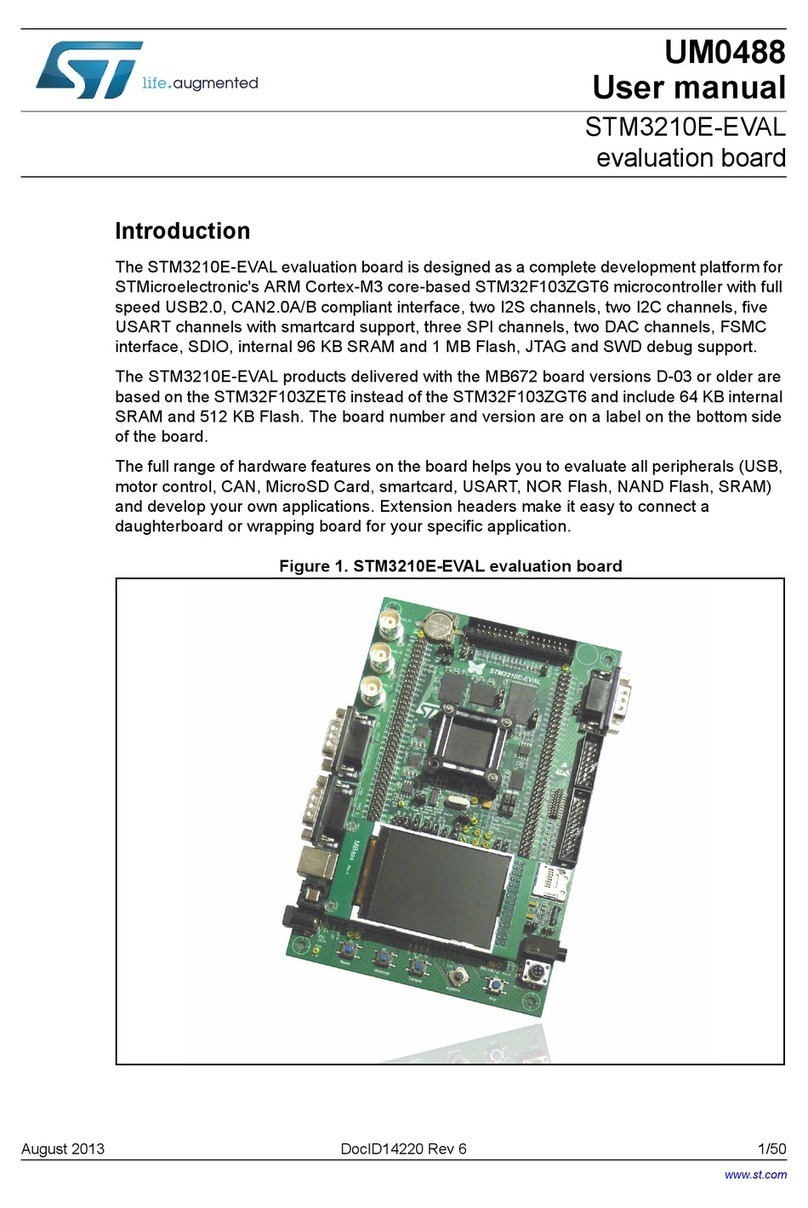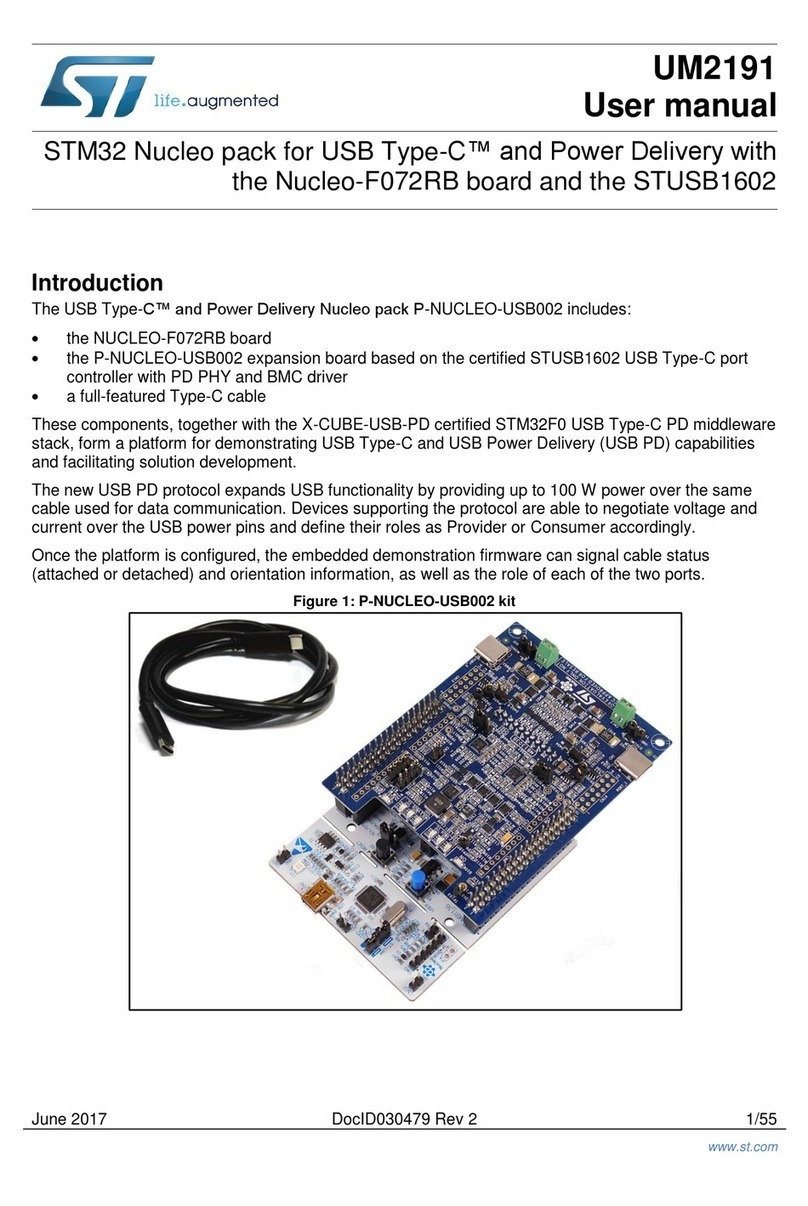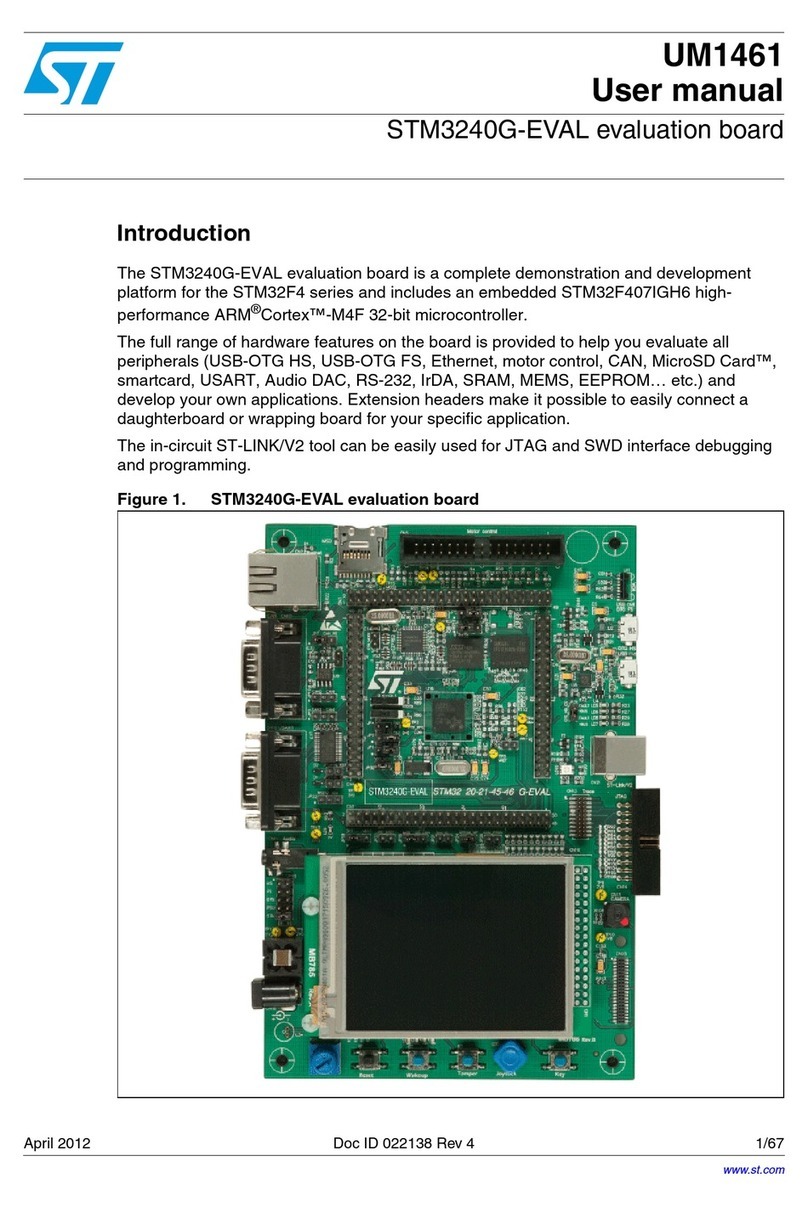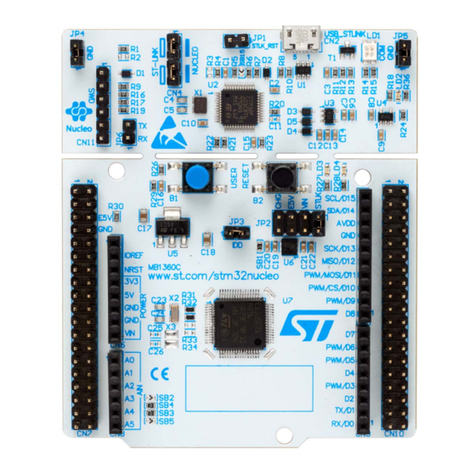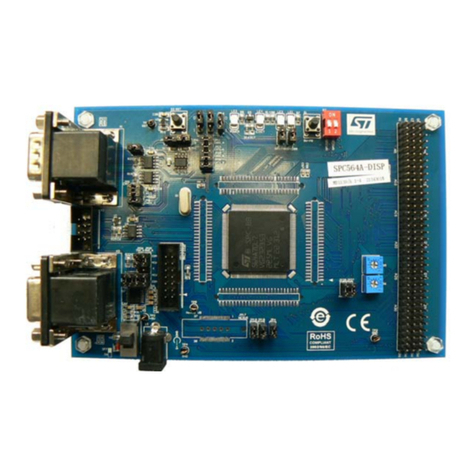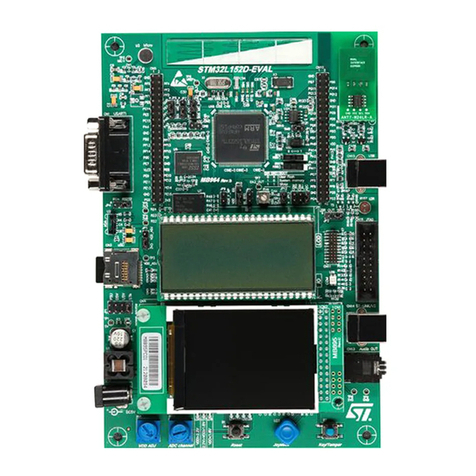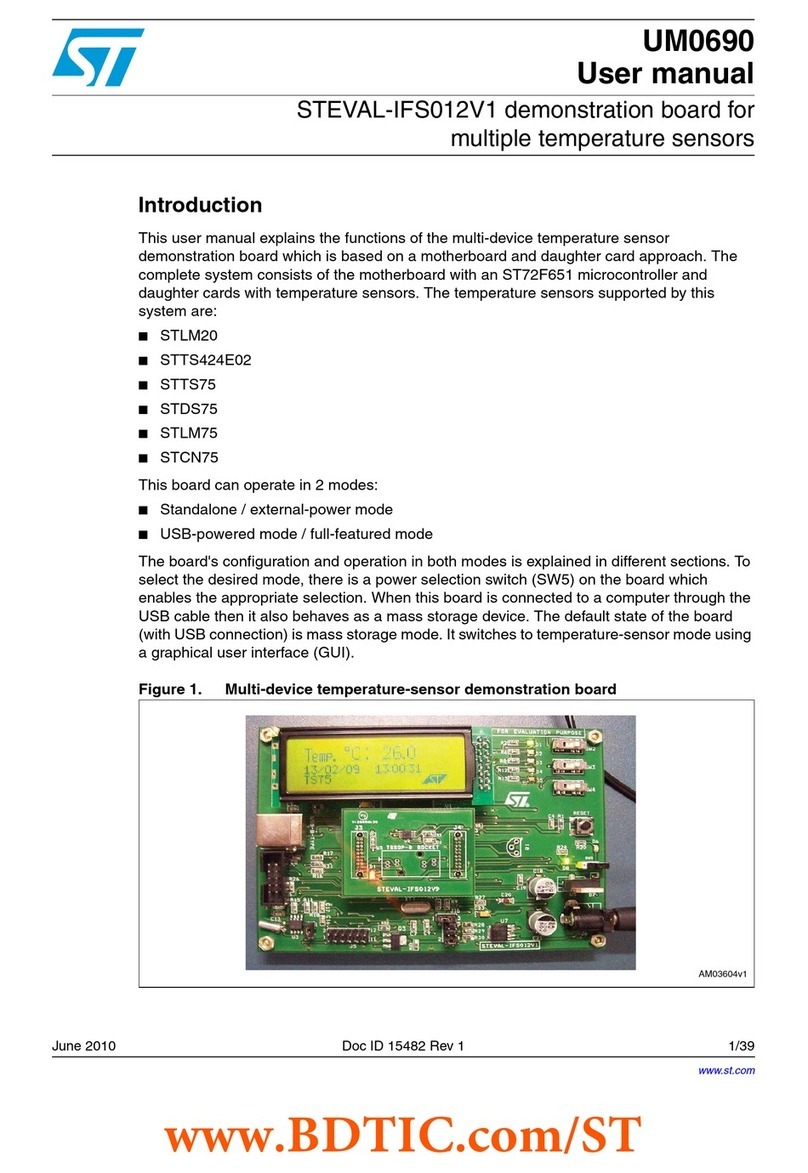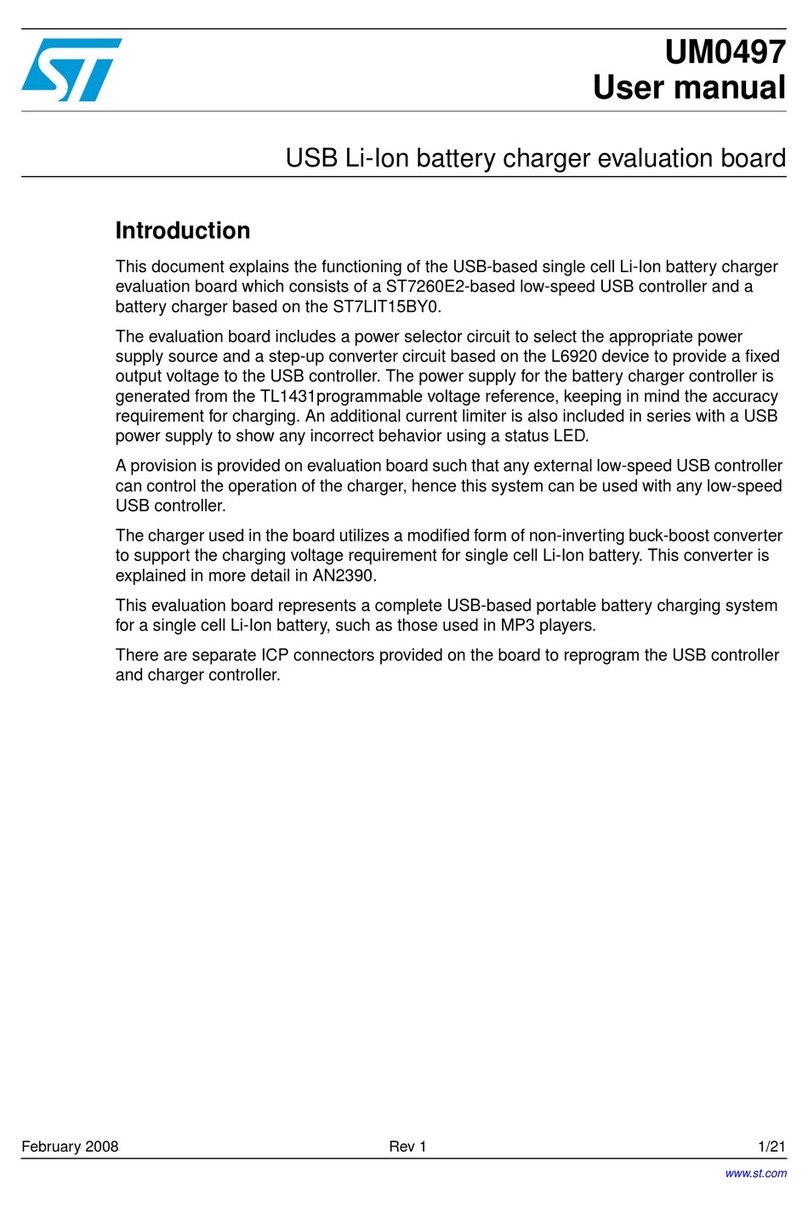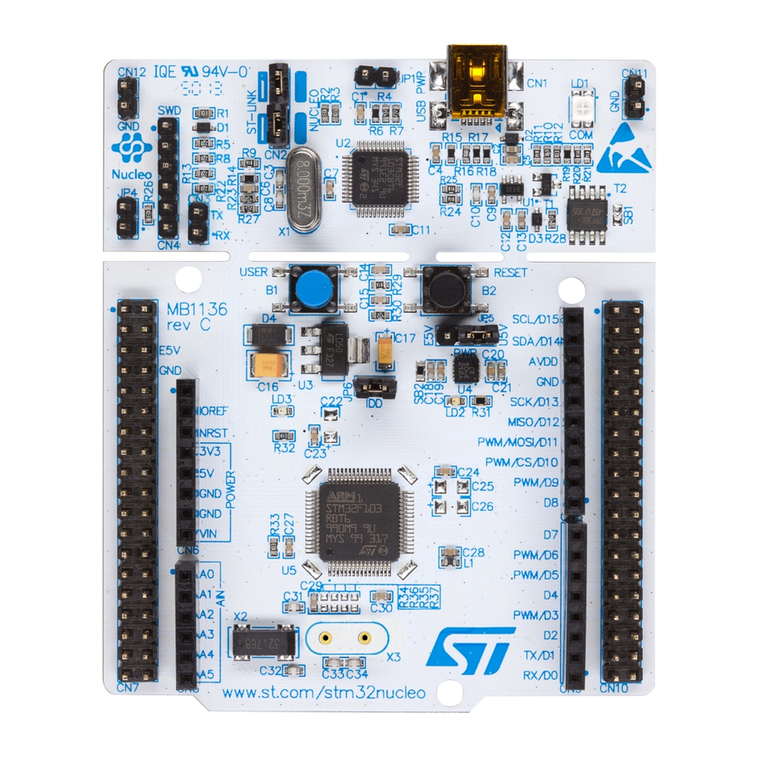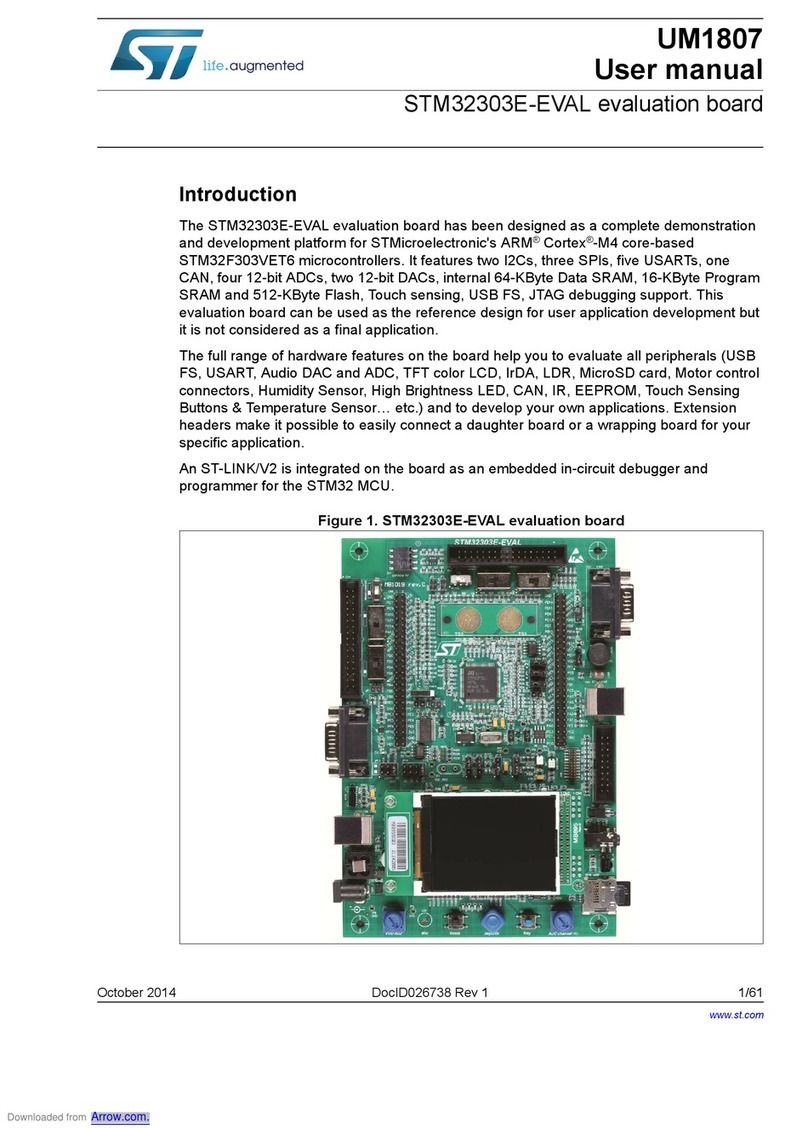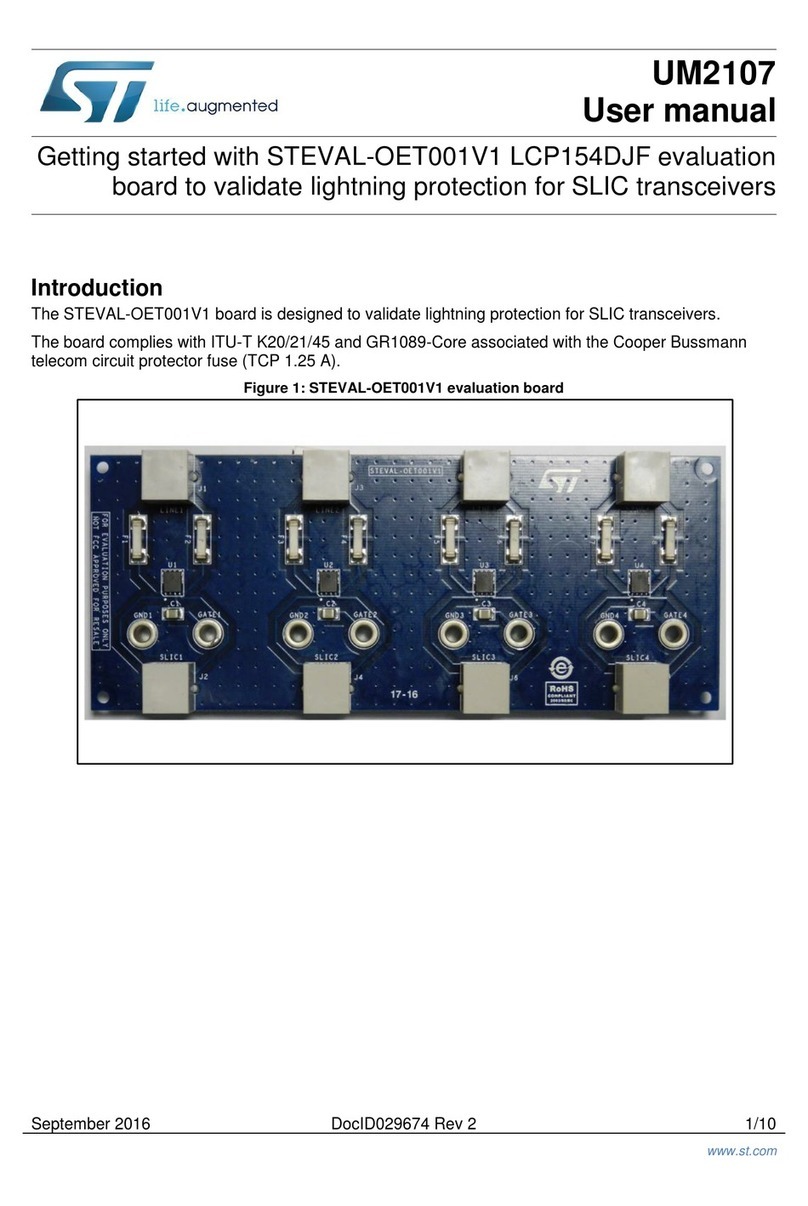
3.3 Gate drivers
The charge supplied by the device at each commutation is equal to the gate current (Igate) multiplied by the
controlled current time (tcc). This value must be greater of the total gate charge (Qg) required to turn on the
integrated MOSFETs. The gate current can be changed to speed up or slow down the commutation speed (i.e.,
the slew rate of the power stage outputs); in this case the controlled current time should be changed accordingly.
The power MOSFETs integrated into the powerSTEP01 system-in-package has a total gate charge of 25 nC
(typical) and the recommended configurations are listed in Table 6.
Table 6. Recommended gate driving configurations
Slew rate (VS = 48 V) Igate tCC tDT tblank tboost
980 V/µs 96 mA 375 ns 125 ns 500 ns 0 ns
790 V/µs 64 mA 500 ns 125 ns 375 ns 0 ns
520 V/µs 32 mA 875 ns 125 ns 250 ns 0 ns
400 V/µs 24 mA 1000 ns 125 ns 250 ns 0 ns
220 V/µs 16 mA 1600 ns 125 ns 250 ns 0 ns
114 V/µs 8 mA 3125 ns 125 ns 250 ns 0 ns
Important: An incorrect gate driving setup may cause spurious overcurrent failures, even if no load is connected to the
power stage.
The suggested configuration for the demonstration board is the following:
• VCC = 15 V
• UVLO protection threshold set high (UVLOVAL = '1')
• Gate current = 64 mA
• Controlled current time = 500 ns
• Deadtime = 125 ns
• Blanking time = 375 ns
• Turn OFF boost time = disabled
3.4 Overcurrent and stall detection thresholds
The overcurrent protection and the stall detection are implemented measuring the drain source voltage of the
MOSFETs, hence their value is a voltage and not a current.
The protection thresholds are set according to the voltage drop caused by the target triggering current on the
MOSFET RDS(on) at the expected operating temperature (in fact, these parameters increase with temperature).
During the preliminary stages of evaluation, the max. value of 1000 mV can be set for both protections. The
default value of 281.25 mV has a good probability to trigger the overcurrent alarm.
Important: It is strongly discouraged to disable the overcurrent shutdown; it may result in critical failures.
3.5 Speed profile
The max. speed parameter is the maximum speed the motor will run. By default, it is about 1000 step/s. That
means, if you send a command to run at 2000 step/s, the motor speed it limited at 1000 step/s.
This is an important safety feature in the final application, but not necessarily useful to evaluate the device
performances. Setting the parameter to high values (e.g., 6000 step/s) allows evaluating the maximum speed
which can be achieved by the application under test through the speed tracking command (Run), but it probably
limits the possibility to use positioning commands (Move, GoTo, etc.).
The Full-Step speed parameter indicates the speed at which the system switches from microstepping to full
step operation.
In voltage mode driving, it is always recommended to operate in microstepping and not to switch to the full step.
Hence, this parameter should be greater than the maximum speed.
UM1829
Gate drivers
UM1829 - Rev 2 page 10/21

